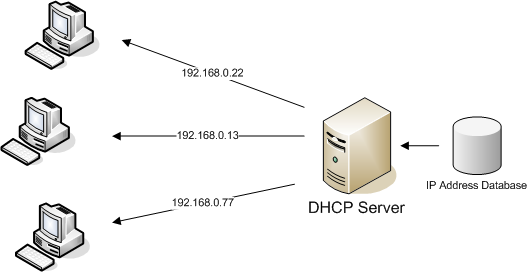The DHCP protocol, which stands for “Dynamic Host Configuration Protocol,” is a network administration protocol that is in charge of the process of assigning an IP address to your system and any network device that you may have. The client-server architecture is the foundation of the DHCP network model. This design dictates that in order to create a connection between two devices, the client device must first send a request message to the server device. The server device is then responsible for assigning the system an IP address.
Arrangement of Resources
The process of giving an IP address to a network system can be broken down into two distinct categories, depending on the allocation mechanism used:
- Manual Allocation: This mode of allocation, as the name suggests, requires you to manually configure the network settings for your device rather than using any network concept. If you choose to use this mode of allocation, you will not be able to use any other mode of allocation. This form of allocation requires significantly more time and is more likely to produce errors due to the involvement of the user. You are going to learn more about the processes on connecting our machine to the internet later on in this Dhcp port tutorial that we are going to walk you through.
Accessing the network configuration settings of the device is required in order to do manual allocation. This method also necessitates the configuration of other associated parameters, such the subnet mask, default gateway, and preferred DNS server.
- Dynamic Allocation: The client (the user device) will submit a request message to the server (the DHCP host) while using the dynamic allocation mode.
After that, the server will share all of the necessary network resources with the client device, and it will also automatically configure the client device so that the system will be able to connect to the internet and use a variety of network services.
DHCP Settings Scope
This characteristic refers to the range of addresses that are currently accessible in the address pool of the DHCP server. Once the server has received the request message from the client system, it will then assign one of those addresses to the client device.
The DHCP server’s Lease setting was developed to prevent a single computer from accumulating an excessive number of IP addresses for its own use.
In order to accomplish this goal, an expiration time is allotted to the leased IP address. This ensures that the DHCP server will always have at least a few addresses available for use by other client devices within the network channel.
Address Reservation: In this DHCP configuration, the client device makes a request to the server to always assign the same IP address to the device. The server complies with this request by assigning the same IP address. When the IP address is assigned, this setting is determined by identifying the client device using the MAC address of the client device.
Conclusion
You learned about the two distinct methods of allotting network configuration for our device while going through this tutorial on what DHCP is and what its purpose is. After that, you discussed the processes that must be completed before a connection can be made between a client and a Dhcp ports server. In this lesson on “what is DHCP,” you were also shown certain DHCP settings-related attributes, which brings us to our final point.
You can enroll in Simplilearn’s Cyber Security Expert course if you are interested in gaining a comprehensive understanding of the subject matter as well as the many protocols that are associated with DHCP. You will become adept in network-related duties, such as creating network connections, directing the flow of data across a network, and other network-specific abilities upon completion of your professional course.
Do you have any queries that are connected to this DHCP instruction that you’d like answered? If you answered yes to either of those questions, you are welcome to discuss them in the comment box located at the bottom of this page. Our experts will assist you in finding solutions to your questions as soon as possible.
- Understanding Backflow Testing and Annual Fire Alarm Inspections: Essential for Safety and Compliance - April 1, 2025
- Preamplifiers – Significance, Types, Benefits - January 10, 2025
- The Science of Bass: Understanding How Subwoofers Work - January 10, 2025

